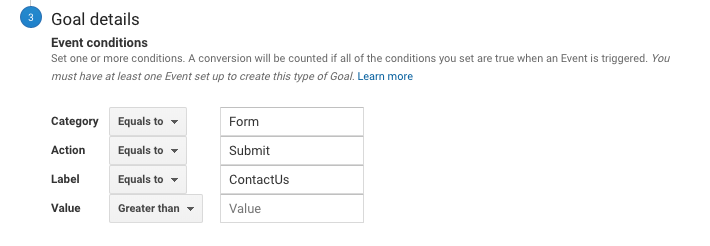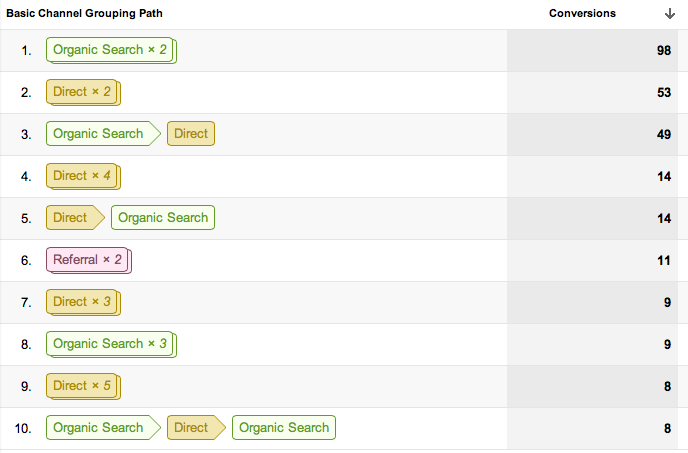Comprehensive List of What Data Is Google Analytics Goals Unable to Track
Comprehensive List of What Data Is Google Analytics Goals Unable to Track
Blog Article
Discover the Limitations of Google Analytics Goals: Revealing the Data Kind That Remain Untrackable
As businesses increasingly rely on data-driven decision-making, comprehending the restrictions of devices like Google Analytics becomes critical. While Google Analytics Goals offer beneficial insights right into customer interactions, there exist information kinds that avoid tracking, positioning obstacles to an extensive understanding of customer behavior.
Insufficient Individual Journey Tracking
Insufficient individual trip monitoring within Google Analytics can impede the ability to precisely evaluate individual behavior. When the individual journey is not completely tracked, there are spaces in the information that avoid a detailed understanding of how customers interact with an internet site. This lack of insight can cause missed out on chances for optimization and renovations to the user experience.
One typical problem with insufficient individual trip monitoring is the inability to see the full course that individuals take previously completing a goal or leaving the site. Without this info, it is challenging to determine where users might be encountering obstacles or rubbing factors that stop them from converting. In addition, insufficient monitoring can obscure the influence of certain marketing initiatives or website adjustments on customer actions.
To address this limitation, it is crucial to establish appropriate tracking devices within Google Analytics to catch the entire customer trip. This might include establishing event monitoring, goal funnels, or utilizing tools like Google Tag Supervisor to make sure that no vital communications go unrecorded. By gaining an extensive sight of the individual trip, site proprietors can make even more educated choices to enhance user involvement and drive conversions.
Attribution Difficulties
Navigating via attribution challenges in Google Analytics needs a thorough understanding of just how various touchpoints add to the total conversion process. Attribution challenges occur from the complexity of contemporary customer trips, where customers communicate with numerous networks before transforming.
One usual acknowledgment difficulty is the difficulty in connecting conversions to the right source, particularly in instances where users interact with multiple networks prior to converting. This can result in mistakes in establishing which marketing efforts are driving one of the most conversions. Furthermore, cross-device tracking postures another attribution obstacle, as individuals commonly change in between tools throughout their journey, making it testing to track their communications effortlessly. Marketing professionals need to very carefully translate and analyze acknowledgment information to make informed decisions and enhance their advertising approaches properly.
Offline Conversions
Offered the difficulties connected with connecting conversions precisely in online channels, the measurement of offline conversions provides a significant opportunity for marketing professionals looking for an extra thorough understanding of their customers' journey. Offline conversions describe activities that consumers take in the real world, such as making purchases in brick-and-mortar shops or over the phone, going to occasions, or engaging with published products - what data is google analytics goals unable to track. These conversions are important for businesses that operate both online and offline, as they offer important understandings right into the performance of advertising campaigns throughout various touchpoints
Tracking offline conversions typically positioned a substantial obstacle for online marketers, as it was testing to link these directory activities back to certain on the internet communications precisely. Nonetheless, with advancements in modern technology, such as the combination of CRM systems, one-of-a-kind identifiers, and coupon codes, services can now link the space in between online and offline data to gain a more all natural sight of consumer actions. By successfully gauging offline conversions, marketers can optimize their methods, allocate sources much more effectively, and ultimately boost the overall customer experience.
Cross-Device Monitoring
Cross-device tracking plays a crucial function in recognizing the interconnected nature of customers' electronic communications throughout numerous gadgets. In today's omnichannel globe, where individuals perfectly switch between desktop computers, tablet computers, and smart devices, tracking their behavior across these devices is important for online marketers to obtain a thorough view of their client journey.

In addition, personal privacy click resources problems and guidelines such as GDPR and CCPA have better complicated cross-device monitoring. With individuals demanding even more control over their data and boosted limitations on tracking technologies, online marketers must find cutting-edge and privacy-compliant methods to connect individual interactions throughout tools.
Dynamic Content Engagement
Understanding customer interaction with dynamic web content is pivotal in optimizing digital advertising strategies for enhanced target market interaction. Dynamic web content refers to web site components that change based upon user habits, preferences, or other elements, offering a customized experience. Nevertheless, tracking individual communications with dynamic web content postures challenges for typical analytics devices like Google Analytics.
While Google Analytics can track basic communications like clicks and page views, it may struggle to catch even more nuanced engagements within vibrant web content. what data is google analytics goals unable to track. Metrics such as time invested in details dynamic aspects, hover activities, or communications within pop-ups are typically not quickly measurable using standard tracking methods. This restriction prevents marketing experts' ability to totally grasp how individuals are involving with vibrant material and customize their strategies accordingly

Final Thought
In final thought, Google Analytics discover this goals have restrictions in tracking insufficient customer journeys, connecting conversions accurately, catching offline conversions, tracking cross-device communications, and measuring vibrant web content involvement. These constraints highlight the importance of discovering additional monitoring techniques and devices to obtain an extra thorough understanding of individual actions and conversions beyond what Google Analytics can provide.
While Google Analytics Goals offer beneficial insights into user interactions, there exist information kinds that avoid monitoring, positioning obstacles to a comprehensive understanding of individual habits.Insufficient user journey tracking within Google Analytics can impede the capacity to properly analyze customer actions. When the user journey is not fully tracked, there are spaces in the data that prevent a detailed understanding of how customers connect with a site.One typical concern with incomplete individual journey monitoring is the failure to see the full course that individuals take before finishing a goal or leaving the website. By getting a detailed sight of the customer journey, website owners can make more enlightened decisions to boost customer interaction and drive conversions.
Report this page